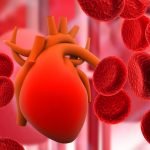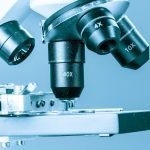The Liver, Thyroid, & MetS
Steven Sandberg-Lewis, ND, DHANP
“The liver is the most affected organ in both hypo- and hyperthyroidism.”1
The association between insulin resistance/metabolic syndrome and non-alcoholic fatty liver disease (NAFLD) is well established. To briefly review, NAFLD may manifest as…
- Simple steatosis, ie, merely fatty infiltration in the hepatocytes, or
- Non-alcoholic steatohepatitis, ie, with an added inflammatory component that causes a hepatitis.
These are distinguished from alcoholic liver diseases in which the patient ingests more than 2 servings of alcohol per day.
In NAFLD, insulin resistance fuels the chronic inflammation in the liver, as opposed to a virus (as in viral hepatitis) or toxicity (as in alcoholic or toxic hepatitis.) Consumption of high-fructose corn syrup is significantly associated with the pathophysiology of NAFLD.2
What is less well recognized is the important relationship between the thyroid and the liver. Thyroid dysfunction can affect liver function, and liver disease is likely to alter thyroid hormone metabolism.
Thyroid & the Liver
The thyroid hormones, T4 and T3, regulate the metabolic activity of hepatocytes and have a central role in hepatic growth, development, and function. Both are important in regulating permeability of vascular endothelial cells and are needed for bilirubin and bile secretion.3 If one considers the extensive synthetic function of hepatic endothelial cells, the hepatic effects of thyroid dysfunction have the potential to be dramatic. The “dark side” of the endothelial cell is endothelial dysfunction, which shifts the phenotype to one promoting thrombosis, inflammation, vasoconstriction, and oxidation. This may convert the liver into a generator of chronic systemic disease.
In thyroid diseases, liver function tests may be altered, and signs of cholestasis may be present. In these situations, liver function tests often return to normal with thyroid hormone repletion.
Thyrotoxicosis increases transaminases in one-third of patients, alkaline phosphatase in two-thirds of patients, and GGT in about one-fifth of patients.3
Iodotyrosine deiodinase type 1 (D1) is found largely in the liver, kidney, and thyroid. D1 converts T4 to active T3, and hepatic D1 is responsible for producing up to 80% of the total body T3. This enzyme can also produce inactive reverse T3. Hepatic D1 is downregulated in severe illness or trauma. This may be due to cytokines, as well as changes in carbohydrate metabolism. Iodotyrosine deiodinase type 2 (D2) is predominantly found in the brain, pituitary, and muscles, and also converts T4 to active T3. Iodotyrosine deiodinase type 3 (D3) converts T4 to inactive reverse T3.4 Inadequate selenium nutrition reduces iodinase enzyme activity.5
A number of drugs or treatments affect both thyroid and liver. These include alcohol, propylthiouracil, amiodarone, mefloquine (anti-malarial), carbamazepine (anti-seizure), many chemotherapy agents, interferon in hepatitis C treatment, and radiation therapy.3
A number of diseases also affect both thyroid and liver. These include non-Hodgkin’s lymphoma, amyloidosis, celiac disease, hemochromatosis, alcoholic liver disease, hepatitis C, and primary biliary cirrhosis.6 Autoimmune diseases also impact both liver and thyroid; classic examples are autoimmune hepatitis and primary biliary cirrhosis – conditions in which celiac disease, Hashimoto’s thyroiditis, and cirrhosis often occur as a triad.7 Based on the research used to create this article, NAFLD may also eventually be added to this list.
The Gut-Liver Axis
In NAFLD, hypothyroidism enhances the damaging effects of bacterial endotoxins on the liver. This is partly because decreased levels of thyroid hormones slow the migrating motor complex (MMC), a component of the enteric nervous system that significantly controls gastric emptying and small intestine motility. A slowing of the MMC increases the risk of small intestinal bacterial overgrowth (SIBO), intestinal dysbiosis, and increased intestinal permeability (or “leaky gut”).8,9
TSH & Cirrhosis
Although physicians might assume that improving thyroid function would be beneficial in most disease states, there is evidence that in cirrhotic patients a higher TSH level may increase albumin and INR (indicating improved hepatic synthetic function), and decrease ALT, alkaline phosphatase, and bilirubin (indicating improved hepatocyte health and less biliary congestion.) Therefore, in cirrhotic patients it may not be best to aggressively treat an underactive thyroid.10 The pathophysiology of this surprising relationship may have to do with the effect of thyroid hormones on hepatocyte growth or the iodine-regulating function of TSH.11
Obesity, Insulin Resistance, & Thyroid Hormones
In the United States, the prevalence of subclinical hypothyroidism is 4.3-9.5%, depending on the study.12 Interestingly, both hypothyroidism and NAFLD can feature obesity, insulin resistance, and dyslipidemia.13 The findings from a number of studies suggest a cause and effect, that is that thyroid dysfunction may contribute to the pathogenesis of fatty liver in susceptible individuals. Eg, in a large Chinese study, each 1 mIU/L increase in TSH correlated with a 20% increase in the prevalence of NAFLD independent of other risk factors.14
In a study of 111 obese adolescents vs 42 lean controls, TSH >4.0 mIU/L (with a normal free T4 level) was considered representative of subclinical hypothyroidism. In obese NAFLD subjects with a TSH >4.0, insulin resistance was significantly higher compared to obese NAFLD subjects with a TSH below 4.0.15 Total cholesterol, triglycerides, LDL-C, insulin, coronary artery media thickness, and left ventricular mass were also greater in the group with higher TSH levels.15
In another study, 82 white non-diabetic subjects with normal-range TSH and free T4 (fT4) were studied. ALT was higher in those with metabolic syndrome. ALT was (surprisingly) inversely correlated with TSH in metabolic syndrome. This relationship was not seen in subjects without metabolic syndrome.16
In a study of 109 obese children, ages 9-15, and 44 normal-weight controls, markers of thyroid and liver function were compared to indicators of insulin resistance. Parameters measured included lipids, ALT, fasting glucose, TSH, fT4, fT3, HOMA-IR (insulin resistance), BMI, and abdominal ultrasound imaging for the presence of steatosis. Results revealed that TSH increased significantly as the degree of steatosis increased, but that fT3 and fT4 levels were no different between controls and subjects with liver steatosis. Unlike the previous study, TSH was significantly correlated with ALT levels, BMI, and the degree of steatosis.17
In 2576 euthyroid middle-aged subjects, ultrasound was used to differentiate fatty livers from normal livers. Free T3 was significantly higher in those with fatty liver, TSH was comparable in both groups, and fT4 was inversely correlated with fatty liver in premenopausal women but not in postmenopausal women.18
In another study of 739 euthyroid subjects, 196 were found to have fatty livers based on ultrasound.19 Low fT4 and high TSH were associated with NAFLD. TSH positively correlated with BMI, waist circumference, and LDL-C, whereas fT4 negatively correlated with BMI and waist circumference. The authors concluded, “our findings suggest serum fT4 and TSH levels within the reference range are independent risk factors for NAFLD.”19 Mehran et al found similar correlations among fT4, TSH, and insulin resistance.20
In Mexican populations, which have especially high rates of insulin resistance, Posades-Romero et al found a high rate of subclinical hypothyroidism.21 Subclinical hypothyroidism was defined as a TSH >4.5 along with a normal fT4. A total of 753 Mexican subjects, ages 35-70, were studied, none of which had a history of diabetes mellitus, or renal, hepatic, thyroid or coronary artery disease; fatty liver, coronary artery calcification, and abdominal fat levels were assessed by computed tomography. Subclinical hypothyroidism was found in 17.7% of subjects. The combination of subclinical hypothyroidism and fatty liver increased the odds of metabolic syndrome and insulin resistance in these subjects.
Similarly, Misrah et al found significantly higher insulin resistance and TSH, and lower fT4, in subjects with fatty liver.22
The Effect of Weight Loss via Laparoscopic Gastric Band on Thyroid Hormones
A study compared 99 controls and 258 obese subjects with normal-range thyroid tests.23 TSH, fT3, fT4, fT3/fT4 ratio, triglycerides, total cholesterol, HDL-C, BMI, and waist circumference were assessed prior to laparoscopic banding for weight loss. Basal thyroid tests were all within normal range, although higher in the obese subjects. These parameters were reassessed at 6 months, 1 and 2 years after gastric banding. With loss of weight, fT4 increased and fT3 decreased. TSH did not change; triglycerides, total cholesterol, insulin and HOMA-IR decreased, while HDL-C increased. The authors attributed the changes to decreases in D1 and D2 deiodinase activity.23
Summary
- Thyroid issues clearly have an impact on insulin resistance and non-alcoholic fatty liver disease. The research discussed here suggests that NAFLD is associated with:
- Elevated euthyroid TSH (subclinical hypothyroidism); TSH increases in parallel with NAFLD
- Low euthyroid fT4 (especially in premenopausal women)
- Higher TSH levels compared to simple steatosis
Although more clarification is needed in future research, there are clear associations between NAFLD and both primary hypothyroidism and euthyroid variations in thyroid hormones. In concert with changes in intestinal flora and permeability, a more complete picture of insulin resistance can now be seen.
UPDATE: In the last year, the calprotectin level which in the article had decreased to the low 100’s has settled at <16 (the lowest it goes) and has been repeated over 6 times during this year. The patient continues to be in remission with no GI sx.
 Steven Sandberg-Lewis, ND, DHANP, has been a practicing naturopathic physician since his graduation from National University of Natural Medicine (NUNM) in 1978. He has been a professor at NUNM since 1985, teaching a variety of courses but primarily focusing on gastroenterology and GI physical medicine. His clinic rotations are particularly popular among NUNM doctoral students. In addition to supervising clinical rotations he also maintains a part-time practice at 8Hearts Health and Wellness in Portland, Oregon.
Steven Sandberg-Lewis, ND, DHANP, has been a practicing naturopathic physician since his graduation from National University of Natural Medicine (NUNM) in 1978. He has been a professor at NUNM since 1985, teaching a variety of courses but primarily focusing on gastroenterology and GI physical medicine. His clinic rotations are particularly popular among NUNM doctoral students. In addition to supervising clinical rotations he also maintains a part-time practice at 8Hearts Health and Wellness in Portland, Oregon.
He is a popular international lecturer at functional medicine seminars, presents webinars, writes articles for NDNR and the Townsend Letter and is frequently interviewed on issues of digestive health and disease. He is the author of the medical textbook Functional Gastroenterology: Assessing and Addressing the Causes of Functional Digestive Disorders, Second Edition, 2017, which is available at amazon.com. In 2010 he co-founded the SIBO Center at NUNM which is one of only four centers in the USA for Small Intestine Bacterial Overgrowth diagnosis, treatment, education and research. In 2014 he was named one of the “Top Docs” in Portland monthly magazine’s yearly healthcare issue and in 2015 was inducted into the OANP/NUNM Hall of Fame.
Within gastroenterology, he has special interest and expertise in inflammatory bowel disease (including microscopic colitis), irritable bowel syndrome (including post-infectious IBS), Small Intestine Bacterial Overgrowth (SIBO), hiatal hernia, gastroesophageal and bile reflux (GERD), biliary dyskinesia, and chronic states of nausea and vomiting.
Many of the patients referred to Dr. Sandberg-Lewis have digestive conditions that have defied diagnosis and effective resolution. Often these patients desire naturopathic treatment options in lieu of the courses of treatments they have previously undergone. He understands diseases of the gastrointestinal tract, but also can assess function and often find successful treatments to regain a balance in the digestive system.
Dr. Sandberg-Lewis lives in Portland with his wife, Kayle. His interests include mandolin, guitar and voice; cross country skiing; writing and lecturing.
References
- Daher R, Yazbeck T, Jaoude JB, et al. Consequences of dysthyroidism on the digestive tract and viscera. World J Gastroenterol. 2009;15(23):2834-2838.
- Basaranoglu M, Basaranoglu G, Bugianesi E. Carbohydrate intake and nonalcoholic fatty liver disease: fructose as a weapon of mass destruction. Hepatobiliary Surg Nutr. 2015;4(2):109-116.
- Burra P. Liver abnormalities and endocrine diseases. Best Pract Res Clin Gastroenterol. 2013;27(4):553-563.
- DeGroot LJ. The Non-Thyroidal Illness Syndrome. In: De Groot LJ, Beck-Peccoz P, Chrousos G, et al, eds. Endotext [Internet]. South Dartmouth (MA): MDText.com, Inc.; 2000-2015 Feb 1.
- St Germain DL, Galton VA, Hernandez A. Minireview: Defining the roles of the iodothyronine deiodinases: current concepts and challenges. Endocrinology. 2009;150(3):1097-1107.
- Elta GH, Sepersky RA, Goldberg MJ, et al. Increased incidence of hypothyroidism in primary biliary cirrhosis. Dig Dis Sci. 1983;28(11):971-975.
- Muratori P, Fabbri A, Lalanne C, et al. Autoimmune liver disease and concomitant extrahepatic autoimmune disease. Eur J Gastroenterol Hepatol. 2015;27(10):1175-1179.
- Ferolla SM, Armiliato GN, Couto CA, Ferrari TC. The role of intestinal bacteria overgrowth in obesity-related nonalcoholic fatty liver disease. Nutrients. 2014;6(12):5583-5599.
- Miele L, Valenza V, La Torre G, et al. Increased intestinal permeability and tight junction alterations in nonalcoholic fatty liver disease. Hepatology. 2009;49(6):1877-1887.
- Maheshwari A, Thuluvath PJ. Endocrine diseases and the liver. Clin Liver Dis. 2011;15(1):55-67.
- Brownstein D. Hashimoto’s Disease: Caused or Cured by Iodine? [Lecture] Association For the Advancement of Restorative Medicine. Annual Conference; 2015.
- Cooper DS, Biondi B. Subclinical thyroid disease. Lancet. 2012;379(9821):1142-1154.
- Eshraghian A, Hamidian Jahromi A. Non-alcoholic fatty liver disease and thyroid dysfunction: a systematic review. World J Gastroenterol. 2014;20(25):8102-8109.
- Chung GE, Kim D, Kim W, et al. Non-alcoholic fatty liver disease across the spectrum of hypothyroidism. J Hepatol. 2012;57(1):150-156.
- Sert A, Pirgon O, Aypar E, et al. Subclinical hypothyroidism as a risk factor for the development of cardiovascular disease in obese adolescents with nonalcoholic fatty liver disease. Pediatr Cardiol. 2013;34(5):1166-1174.
- Dullaart RP, van den Berg EH, van der Klauw MM, Blokzijl H. Low normal thyroid function attenuates serum alanine aminotransferase elevations in the context of metabolic syndrome and insulin resistance in white people. Clin Biochem. 2014;47(12):1028-1032.
- Torun E, Özgen IT, Gökçe S, et al, Thyroid hormone levels in obese children and adolescents with non-alcoholic fatty liver disease. J Clin Res Pediatr Endocrinol. 2014;6(1):34-39.
- Liu G, Zheng X, Guan L, et al. Free triiodothyronine levels are positively associated with non-alcoholic fatty liver disease in euthyroid middle-aged subjects. Endocr Res. 2015;40(4):188-193.
- Tao Y, Gu H, Wu J, Sui J. Thyroid function is associated with non-alcoholic fatty liver disease in euthyroid subjects. Endocr Res. 2015;40(2):74-78.
- Mehran L, Amouzegar A, Tohidi M, et al. Serum free thyroxine concentration is associated with metabolic syndrome in euthyroid subjects. Thyroid. 2014;24(11):1566-1574.
- Posadas-Romero C, Jorge-Galarza E, Posadas-Sánchez R, et al. Fatty liver largely explains associations of subclinical hypothyroidism with insulin resistance, metabolic syndrome, and subclinical coronary atherosclerosis. Eur J Endocrinol. 2014;171(3):319-325.
- Misra S, Singh B. Insulin resistance and hypothyroidism: a complex relationship in non-alcoholic fatty liver disease. J Indian Med Assoc. 2013;111(5):324-326, 329.
- Dall’Asta C, Paganelli M, Morabito A, et al, Weight loss through gastric banding: effects on TSH and thyroid hormones in obese subjects with normal thyroid function. Obesity (Silver Spring). 2010;18(4):854-857.










